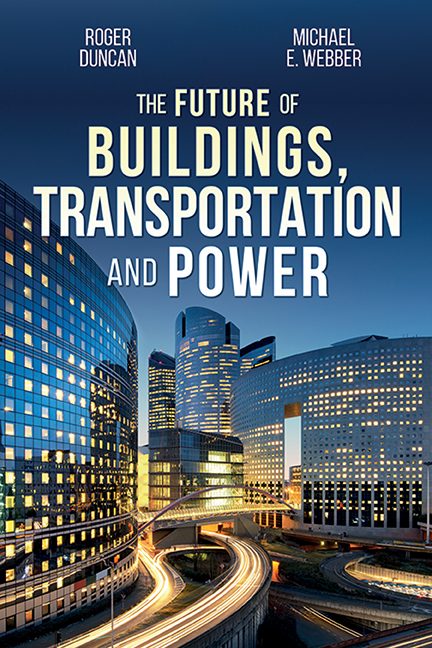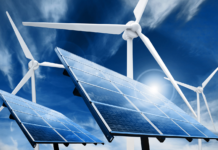
A look into the future of natural gas with excerpts from “The Future of Buildings, Transportation and Power”
In the first two decades of the 21st century, natural gas has been the primary winner in the electric generation industry. Gas should continue its success in the near-term, both in meeting new generation demands, and as supporting power for wind and solar as they expand. Modern, combined cycle, natural gas power plants are capable of operating at almost twice the energy efficiency of coal power plants. And since most of the potential pollutants in natural gas, such as sulfur dioxide, are removed prior to combustion, the emission streams from the plants are much cleaner than coal. This combination of higher efficiency, lower emissions, and now lower fuel price, have made natural gas power plants dominant in the power sector.
Natural gas is also gaining market share of distributed generation through fuel cells and conventional natural gas fired combined heat and power. Gas microturbines represent another aspect of natural gas penetration into the distributed generation market. For years, the price of natural gas was a deterrent to the expansion of these small turbines in the marketplace. With the onset of low natural gas prices in the 2010s, the use of microturbines is expected to expand, but still remain a distant second to solar.
Compared with petroleum, natural gas also has some benefits as a transportation fuel. It can be cheaper, the U.S. has vast stores of it, and its emissions of CO2 are lower than gasoline or diesel. The delivery service UPS added more than 700 compressed natural gas (CNG) vehicles to their fleet as part of their long-term goal of reducing their CO2 emissions.
Public transportation is another sector turning to natural gas as it decarbonizes. As of 2019, 29% of buses in the U.S. were fueled by CNG. While this might be a cost-effective and relatively simple transition for vehicle fleets with centralized fueling locations, it doesn’t seem likely that we’ll see large numbers of personal vehicles switching to the lower carbon fuel, especially given the increasing availability of electric vehicles. Honda had a Civic that ran on CNG, and Ford made a CNG version of their F-150, but neither model has been in production for the last few years.
And there is a fueling infrastructure problem. Even though natural gas vehicles have been around for decades, and many homes have natural gas plumbing, the fueling stations still number less than a thousand.
Gas is abundant, relatively clean at the point of combustion, and relatively inexpensive. Most experts agree that there is an enormous amount of gas in the U.S. alone. The reserves are estimated to be massive enough to last many decades, if not centuries. And new hydraulic fracturing technology makes it relatively cheap to extract gas compared to getting to hard-to-reach conventional fossil fuel resources (such as offshore or remote fields). Because of these factors, U.S. gas production has grown significantly, starting in 2008. From 2007 to 2018, annual shale gas production in the U.S. grew from 1.3 trillion cubic feet to more than 17 trillion, and the EIA baseline forecast projects it to reach 33 trillion by 2050. Because of this abundance and ease of production, natural gas prices have fallen steeply. But, following an increase in drilling and expansion into more difficult to reach reserves, recent estimates from the EIA have the natural gas price slowly increasing up to 2050.
Though not expected to grow as fast as in the U.S., worldwide gas-fired electricity generation is also expected to grow by more than 50% from 2010 to 2040. Whatever the demand for gas around the world, there are several significant reasons why gas production in other parts of the globe will lag behind that in the United States. For one, the geology of most of the rest of the world is simply not as well-known and mapped as it is in the U.S. Some early hopeful prospects for large deposits, for example in Poland, haven’t panned out for a variety of technical, political, and cultural reasons. Much of the relatively new, highly specialized drilling equipment needed to get to the gas reserves is still tied up in the U.S. And, with their larger reserves of other fuels and other energy agendas, many foreign governments are unlikely to make natural gas production a high priority.
That said, China, Mozambique, and the Middle East all have huge gas reserves that could be tapped when the time comes. And under the sea, and beneath some permafrost, gas methane from hydrate sources could represent enormous reserves if the technology could be perfected to safely use it. At present, the Japanese are leading the search for just such a technology.
The Future of Buildings, Transportation and Power by international thought leaders in energy Roger Duncan and Michael E. Webber, a unique, researched vision for our future, will be available fall 2020 and details the future of natural gas
Roger Duncan is a former Research Fellow at the Energy Institute at the University of Texas at Austin. He is the former General Manager of Austin Energy, the municipal electric utility for Austin, Texas. Prior to that, he served as executive manager for several City of Austin departments, including the Environmental and Conservation Services department and Planning and Transportation. Roger was also elected to two terms as Austin City Council member in the early 1980’s. In 2005, Business Week magazine recognized Roger as one of the 20 leading “carbon reducers” in the world, and in 2009 National Geographic recognized him as an international thought leader in energy efficiency.
Dr. Michael E. Webber serves as the Chief Science and Technology Officer at ENGIE, a global energy & infrastructure services company in Paris, France. Webber is also the Josey Centennial Professor in Energy Resources at the University of Texas at Austin. Webber’s expertise spans research and education at the convergence of engineering, policy, and commercialization on topics related to innovation, energy, and the environment. His latest book, Power Trip: the Story of Energy, was published in 2019 by Basic Books with a 6-part companion series on PBS. His first book, Thirst for Power: Energy, Water and Human Survival, which addresses the connection between Earth’s most valuable resources and offers a hopeful approach toward a sustainable future, was published in 2016 by Yale Press and was converted into a documentary.














